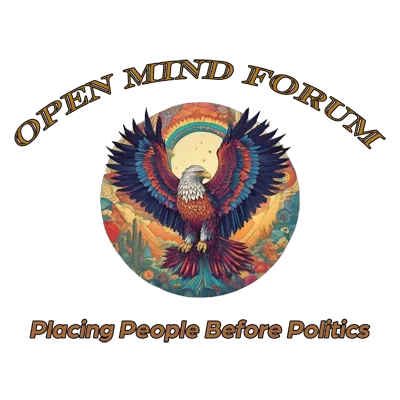Exploring Dispersal, Absence, and Uncertainty in Oral and Written Language
Introduction to Derrida and Language
In Dissemination, Jacques Derrida explores how language inherently disperses meaning, challenging traditional views of language as a stable, transparent medium of communication. Derrida contends that language is haunted by dispersal,

absence, loss, and the risk of misunderstanding or “unmeaning,” creating a dynamic where words resist singular interpretations.
Through close readings of philosophical texts, Derrida disrupts the notion that words convey fixed meanings, illustrating instead how language disseminates meaning across multiple possible interpretations. This analysis of Dissemination delves into Derrida’s concept of language, examines critics’ perspectives, and offers practical applications, using accessible examples to illuminate Derrida’s ideas for novice readers.
Derrida and Language: The Concept of Dissemination
Derrida’s Dissemination confronts the common assumption that language simply “contains” meaning. In Derrida’s view, language functions less like a vessel for ideas and more like a seed that scatters meanings across an open field, where context and interpretation can drastically alter its significance. A single word can carry multiple, sometimes contradictory, meanings, all influenced by its use and audience. Derrida’s concept of différance—a play on the French word différer, meaning both to defer and to differ—captures this instability. For Derrida, différance describes how words are continually deferred, or postponed, in meaning as they shift across different contexts.
For instance, in his analysis of Plato’s Phaedrus, Derrida examines Socrates’ skepticism toward writing, which Socrates saw as inferior to speech for its inability to respond to the reader’s questions. Derrida views this mistrust of writing as a sign that language itself is “disseminative”: writing separates meaning from any one speaker’s intention, opening the text to multiple interpretations beyond the author’s original intention. The concept of “dissemination” thus suggests that words scatter across interpretations, forever escaping a single, authoritative meaning.
Derrida and Language as Haunted by Absence and Loss
Derrida proposes that language is haunted by “absence” because words do not deliver fixed meanings but instead rely on traces of past interpretations and potential future uses. Each term carries with it the ghosts of meanings it might convey in

another context, lending language an unstable quality that challenges traditional communication. For Derrida, language communicates meaning through what it leaves unsaid as much as what it articulates. The word “dissemination” itself provides an example: it suggests scattering but also carries agricultural connotations of planting and growth. This multiplicity haunts the meaning of the word, infusing it with the “loss” of any definitive interpretation.
In practical terms, Derrida’s concept of language can be seen in the realm of law, where legal terms and statutes often undergo reinterpretation over time. The term “justice,” for example, has been debated and redefined within different contexts, from civil rights to criminal law. By viewing language as haunted by absence, Derrida emphasizes that words like “justice” are neither empty nor fully transparent; rather, they carry a history of interpretations and conflicting meanings that influence their current understanding.
Critiques of Derrida and Language
Derrida’s work has sparked significant debate, especially among philosophers who argue that his emphasis on language’s ambiguity undermines communication. Philosopher John Searle, for instance, criticizes Derrida’s theory as an “attack on the possibility of meaning” (Searle, 1983). Searle contends that language, despite its ambiguities, depends on shared conventions to function as a medium of understanding. Without these conventions, Searle argues, communication would disintegrate into individual interpretations disconnected from any common ground.
Another prominent critic, Jürgen Habermas, argues that Derrida’s notion of “dissemination” neglects the social function of language. Habermas believes that language serves a fundamental role in building consensus and mutual understanding, particularly in democratic societies (Habermas, 1987). By emphasizing language’s instability, Habermas argues, Derrida risks weakening the trust that individuals place in words to create shared meaning.
Responses to Criticism: Understanding Language Through “Dissemination”
Derrida might respond to these critiques by asserting that his work does not deny the possibility of understanding; rather, it acknowledges the complexities and risks inherent in interpretation. Derrida would argue that “dissemination” does not prevent meaning but invites us to approach language with greater awareness of the layers and potential slippages in interpretation. In Limited Inc., Derrida addresses Searle’s critique directly, clarifying that language functions precisely because of its capacity for varied interpretation and contextual flexibility (Derrida, 1988). Derrida’s view suggests that meaning arises not in spite of language’s instability but because of it.
Additionally, Derrida’s perspective on language encourages a more inclusive approach to meaning-making. In fields like anthropology and cultural studies, the idea that words have multiple interpretations respects the diversity of cultural expressions and meanings. Rather than assuming that one “correct” interpretation exists, Derrida’s approach acknowledges that words hold significance within their cultural, historical, and contextual frameworks.
Derrida and Language in Practice: Pragmatic Uses of Dissemination
The concept of “dissemination” finds practical application across disciplines that grapple with ambiguity. In literature, for example, Derrida’s theory encourages readers to explore texts as sites of multiple meanings. Shakespeare’s Hamlet becomes richer when viewed through Derrida’s lens: each line in Hamlet’s famous soliloquy (“To be or not to be”) disperses possible meanings related to life, death, choice, and consequence. Derrida’s approach invites readers to explore these meanings as interconnected rather than singular, emphasizing how literature can generate layered interpretations that deepen understanding.
In legal studies, Derrida’s work reveals how judicial rulings rely on interpretation that evolves over time. Judges often draw on precedent, which introduces layers of past rulings and interpretations into present-day decisions. By approaching legal language as “disseminative,” legal scholars and practitioners can navigate the inherent ambiguity of terms like “freedom” and “rights,” understanding them as evolving concepts rather than fixed principles.
Derrida and Language: Implications for Novice Readers and Diverse Contexts
For newcomers to Derrida’s ideas, it can be helpful to see how “dissemination” affects real-world language. In education, Derrida’s theory encourages teachers to approach texts as dynamic and open to interpretation. A novel read in a high school classroom offers students different meanings than the same text might offer in a college course or to adult readers. Each audience brings its own experiences and context, highlighting how language communicates through an ongoing process of reinterpretation and adaptation.
Derrida’s view of language can also inspire inclusivity in discussions about culture and identity. For example, terms like “identity” and “belonging” hold different meanings across various cultural and historical backgrounds. Derrida’s notion of “dissemination” prompts respect for these diverse interpretations, fostering a more inclusive approach to communication and understanding in multicultural contexts.
Conclusion: Derrida and Language as a Lifelong Dialogue
Derrida’s Dissemination challenges readers to rethink language as a medium of fixed meaning. Instead, language operates as a fluid, interpretative process that engages speakers, listeners, writers, and readers in a collaborative act of meaning-making. By framing language as a force of “dissemination,” Derrida unveils the limitations of language even as he highlights its power to convey ideas through a web of meanings and possibilities. His work reminds us that language, despite its ambiguity, remains a powerful tool for connection.
Sources Cited
Derrida, J. (1981). Dissemination. Trans. Barbara Johnson. University of Chicago Press.
Derrida, J. (1988). Limited Inc. Northwestern University Press.
Habermas, J. (1987). The Philosophical Discourse of Modernity: Twelve Lectures. MIT Press.
Searle, J. R. (1983). Intentionality: An Essay in the Philosophy of Mind. Cambridge University Press.
Suggestions for Further Reading
– Ricoeur, P. (1981). Hermeneutics and the Human Sciences. This collection offers an alternative to Derrida’s ideas, framing language as complex yet comprehensible through interpretation.
– Rorty, R. (1989). Contingency, Irony, and Solidarity. Rorty’s pragmatic approach provides a counterpoint to Derrida’s, focusing on the social construction of meaning within communities.
– Culler, J. (1982). On Deconstruction: Theory and Criticism after Structuralism. Culler provides an accessible introduction to Derrida’s deconstruction, making his complex ideas more approachable for new readers.
– Norris, C. (1982). Deconstruction: Theory and Practice. This accessible overview introduces Derrida’s theories and practical applications in literary studies.
– Spivak, G. C. (1974). Of Grammatology. Spivak’s translation and commentary on Derrida’s foundational work on deconstruction offers critical insights into différance.
Disclaimer: The images and videos in this post are AI-generated creations, intended purely for illustrative and conceptual purposes. They are not real-life representations and should not be interpreted as such. Their sole purpose is to offer a visual means of exploring the topics discussed in this post.




